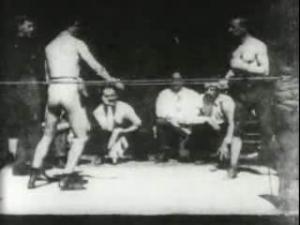Before I truly dive into this topic, I must state an opinion of mine. Silent films are films that I mostly do not enjoy. Apart from a few exceptions like Charlie Chaplin or similar comedy movies from the time, I never really enjoyed silent films. Maybe it might be because the piano music some of these films that kind of makes me feel a little tired or maybe it might because of how different silent films are from the films I’m more accustomed to. I don’t really know what my own reason is for not really enjoying silent films but it just isn’t my cup of tea. “Traffic in Souls” is another one of those movies where I kind of didn’t enjoy the overall experience of the movie but there was a few elements that I did find pretty interesting about the movie.
One of those elements that I really found interesting about the movie was its plot and setting. The story is realistic of its time frame taking place in the 1910’s and dealing with “White Slavery” or prostitution. It contains multiple plots which range from stopping a “White Slavery” ring to the separation of two sisters. The plots made the movie more interesting however it takes a really long time to build up in my opinion and even drags out at times. Regardless of how it drags on, it still is interesting enough all on its own.
Other parts of the movie that I found to be effective were some of the technological aspects of the film. Compared to movies that came before it, the film was a feature as it was much longer and more complex. It also was six reels long which was a risky way to make a movie back then but overall, the quality of the film was an improvement of the films that came previously. Overall, I can’t help but notice that “Traffic in Souls” has made a few innovations especially with plot and storytelling however I personally feel it hasn’t aged well in everyone’s eyes. Maybe if this movie was remade, I feel that it can be improved on and audiences might be able to enjoy it better now.



